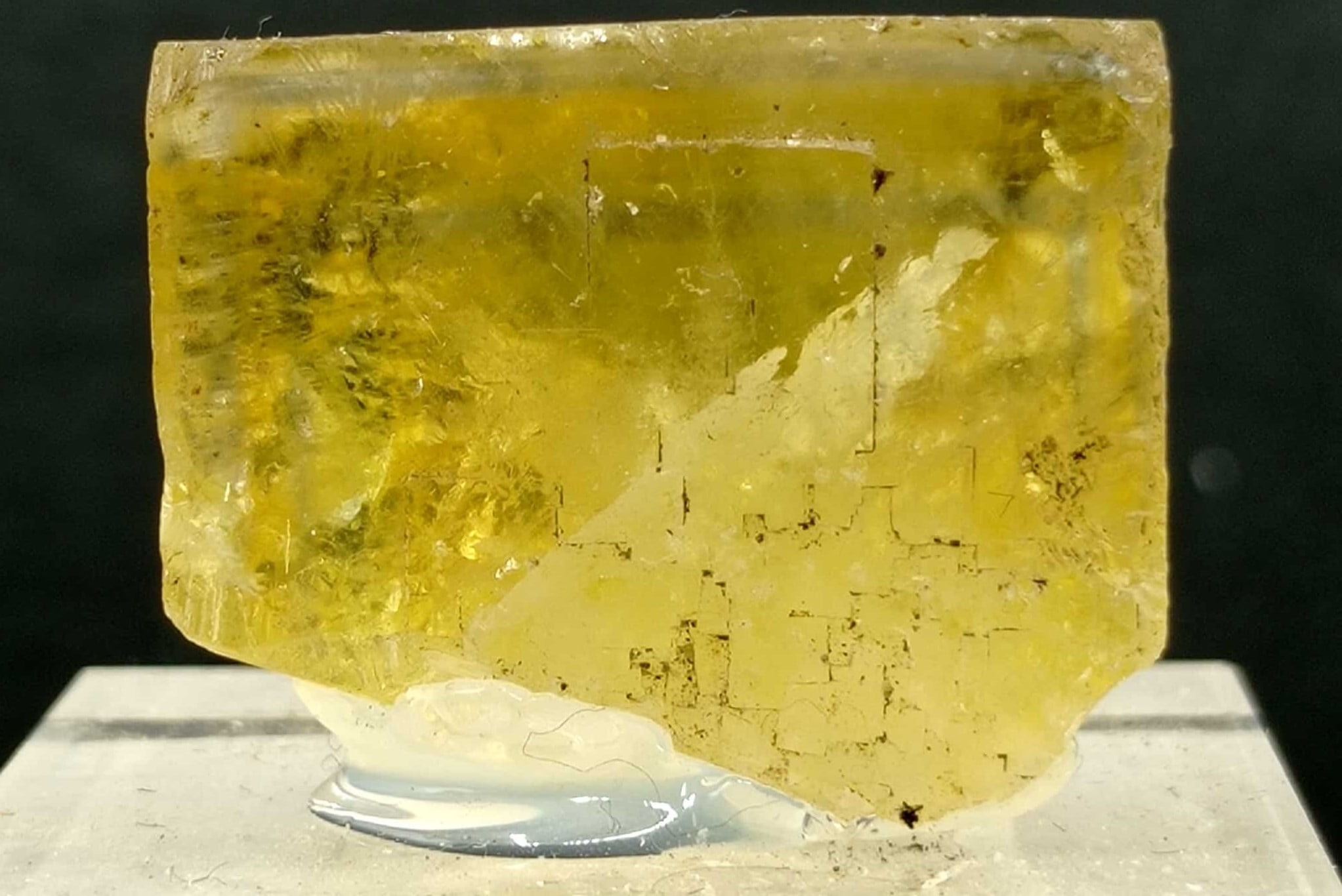
Fluorine is a fascinating element with a lot of unique properties. Found in the ninth spot on the periodic table, this pale yellow gas is the most reactive and electronegative of all elements. Fluorine is used in many everyday products, from toothpaste to Teflon pans. It plays a crucial role in the production of uranium for nuclear power plants. Despite its usefulness, fluorine is highly toxic and must be handled with extreme care. Did you know that it can form compounds with almost every other element? This makes it incredibly versatile but also dangerous. Ready to learn more? Here are 50 intriguing facts about fluorine that will blow your mind!
What is Fluorine?
Fluorine is a fascinating element with unique properties and a wide range of applications. Let's dive into some interesting facts about this element.
- Fluorine is the lightest halogen and is represented by the symbol F on the periodic table.
- It has an atomic number of 9, meaning it has nine protons in its nucleus.
- Fluorine is highly reactive, making it difficult to isolate in its pure form.
- It is a pale yellow gas at room temperature.
- The element was first isolated by French chemist Henri Moissan in 1886.
Chemical Properties of Fluorine
Fluorine's chemical properties make it a standout element in the periodic table. Here are some key points about its chemical behavior.
- Fluorine has the highest electronegativity of all elements, with a value of 3.98 on the Pauling scale.
- It forms compounds with almost all other elements, including noble gases like xenon and radon.
- Fluorine gas is highly toxic and can cause severe burns upon contact with skin.
- It reacts explosively with hydrogen, even at low temperatures.
- Fluorine is a powerful oxidizing agent, meaning it can easily accept electrons from other substances.
Uses of Fluorine
Fluorine's unique properties make it useful in various industries. Here are some of its applications.
- Fluorine is used in the production of Teflon, a non-stick coating for cookware.
- It is a key component in the manufacture of fluorocarbons, which are used as refrigerants and propellants.
- Fluorine is used in the production of uranium hexafluoride, essential for nuclear fuel processing.
- It is also used in the pharmaceutical industry to produce certain medications.
- Fluorine compounds are used in toothpaste and drinking water to help prevent tooth decay.
Fluorine in Nature
Fluorine is not just a man-made wonder; it also occurs naturally. Here are some facts about its natural presence.
- Fluorine is found in minerals such as fluorite and cryolite.
- It is the 13th most abundant element in the Earth's crust.
- Fluorine is present in small amounts in seawater.
- Plants absorb fluorine from the soil, which can then enter the food chain.
- Volcanic eruptions can release significant amounts of fluorine into the atmosphere.
Health Effects of Fluorine
Fluorine can have both beneficial and harmful effects on health. Here are some important points to consider.
- Small amounts of fluoride in drinking water can help prevent dental cavities.
- Excessive fluoride intake can lead to a condition called fluorosis, which affects teeth and bones.
- Inhalation of fluorine gas can cause severe respiratory issues.
- Chronic exposure to high levels of fluorine can lead to skeletal fluorosis, a serious bone disease.
- Fluorine is used in some medical imaging techniques, such as PET scans.
Fun Facts about Fluorine
Fluorine has some quirky and fun aspects that make it even more interesting. Check these out!
- Fluorine is named after the mineral fluorite, which was used in metal smelting.
- The element has a melting point of -219.67°C and a boiling point of -188.11°C.
- Fluorine is used in the production of fluorescent light bulbs.
- It is also used in the etching of glass and semiconductors.
- Fluorine compounds are used in the production of high-performance plastics.
Historical Facts about Fluorine
Fluorine has a rich history that dates back centuries. Here are some historical tidbits.
- The use of fluorine-containing minerals dates back to ancient civilizations for metalworking.
- Henri Moissan won the Nobel Prize in Chemistry in 1906 for his work on isolating fluorine.
- During World War II, fluorine was used in the Manhattan Project for uranium enrichment.
- The discovery of fluorine was a significant milestone in the field of chemistry.
- Early chemists faced many challenges and dangers while trying to isolate fluorine.
Fluorine in Popular Culture
Fluorine has made its way into popular culture in various ways. Here are some examples.
- Fluorine is often mentioned in science fiction literature and movies due to its unique properties.
- The element is sometimes used as a plot device in stories involving chemical reactions and explosions.
- Fluorine's role in toothpaste has been highlighted in numerous advertisements and public health campaigns.
- The element has been featured in educational programs and documentaries about chemistry.
- Fluorine's bright yellow color in its gaseous form makes it visually striking in scientific demonstrations.
Environmental Impact of Fluorine
Fluorine and its compounds can have significant environmental effects. Here are some key points.
- Fluorine emissions from industrial processes can contribute to air pollution.
- Fluorine compounds can accumulate in soil and water, affecting plant and animal life.
- Proper disposal of fluorine-containing waste is crucial to prevent environmental contamination.
- Fluorine plays a role in the depletion of the ozone layer when released as certain fluorocarbons.
- Efforts are being made to develop more environmentally friendly alternatives to fluorine-based products.
Future of Fluorine
The future holds exciting possibilities for fluorine and its applications. Here are some potential developments.
- Researchers are exploring new uses for fluorine in advanced materials and technologies.
- Fluorine-based compounds are being studied for their potential in renewable energy solutions.
- Advances in fluorine chemistry could lead to more efficient and safer industrial processes.
- The medical field continues to investigate new fluorine-containing drugs and diagnostic tools.
- Fluorine's unique properties will likely keep it at the forefront of scientific research and innovation.
Fluorine's Fascinating World
Fluorine, the most reactive element, plays a crucial role in our daily lives. From strengthening teeth in toothpaste to its use in Teflon, this element is everywhere. Its unique properties make it indispensable in various industries, including pharmaceuticals and electronics. Despite its reactivity, controlled use of fluorine has led to significant advancements in technology and medicine.
Understanding fluorine's impact helps us appreciate its importance. Its presence in nature, combined with human ingenuity, has harnessed its potential for numerous applications. Whether it's in the air we breathe or the products we use, fluorine's influence is undeniable.
Next time you brush your teeth or cook with a non-stick pan, remember the tiny element making it all possible. Fluorine's story is a testament to the wonders of chemistry and its profound effect on our world.
Was this page helpful?
Our commitment to delivering trustworthy and engaging content is at the heart of what we do. Each fact on our site is contributed by real users like you, bringing a wealth of diverse insights and information. To ensure the highest standards of accuracy and reliability, our dedicated editors meticulously review each submission. This process guarantees that the facts we share are not only fascinating but also credible. Trust in our commitment to quality and authenticity as you explore and learn with us.


